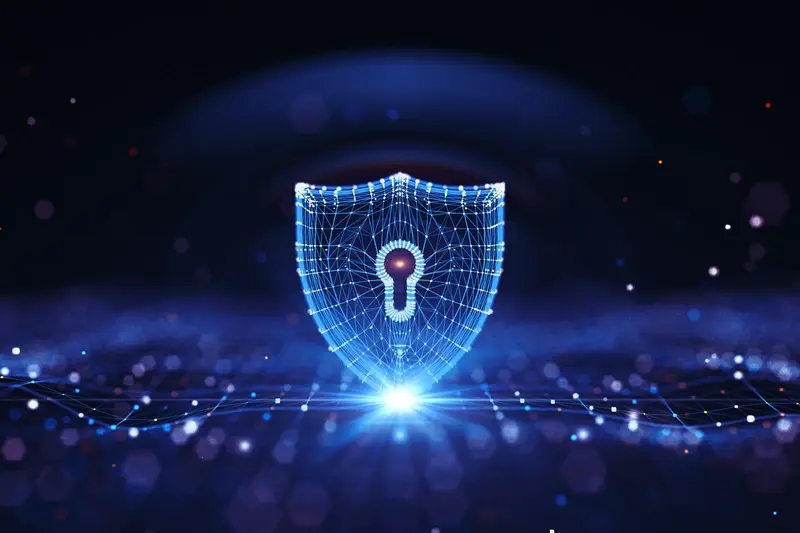How Do I Maintain Control Of My App Source Code?
Every year, thousands of brilliant app ideas turn into legal nightmares because founders lose control of their own source code. It's a shocking reality that catches even the smartest entrepreneurs off guard—one day you're celebrating your app's success, the next you're discovering you don't actually own the code that powers it.
This guide will show you exactly how to maintain complete control over your app source code ownership from day one. We'll cover everything from protecting your app intellectual property to structuring development partnerships that keep you in the driver's seat. Because here's the thing—losing control of your code isn't just about legal technicalities; it's about losing control of your entire business future.
The most expensive mistake an app founder can make is assuming they automatically own what they've paid someone else to build
Throughout this guide, we'll walk through the practical steps you need to take to secure your app development IP rights. You'll learn which contract terms actually matter, how to manage code access during development, and the legal steps that genuinely protect your assets. No confusing jargon or theoretical nonsense—just straightforward advice that will keep your intellectual property exactly where it belongs: with you.
Understanding App Source Code Ownership
Right, let's start with the basics—what exactly is app source code ownership and why should you care? Think of your app's source code as the recipe for your favourite cake; whoever owns that recipe controls how the cake gets made, who can make it, and what happens to it in the future. The same principle applies to your mobile app.
When you hire a development agency or freelancer to build your app, the question of who owns the code isn't always straightforward. By default, the person or company writing the code often holds the copyright unless there's a written agreement stating otherwise. This can be a real shock for business owners who assume they automatically own everything they've paid for.
Types of Code Ownership Arrangements
- Full ownership transfer—you own everything once it's built and paid for
- Shared ownership—both you and the developer retain certain rights
- Developer retention—the agency keeps ownership but grants you usage rights
- Open source components—parts of your app may use publicly available code
The arrangement you choose affects everything from future updates to selling your business. If a developer retains ownership, you might find yourself stuck when you want to switch agencies or make changes. That's why getting this sorted from day one isn't just smart—it's business survival.
Protecting Your Intellectual Property Rights
I've seen too many business owners make the mistake of thinking their app idea alone is enough to protect them—but here's the reality check you need. Your intellectual property rights go far beyond just having a brilliant concept; they cover everything from your source code and unique algorithms to your app's design elements and branding.
The moment your developer writes the first line of code for your app, intellectual property is being created. Without proper protection in place, you could find yourself in a situation where you don't actually own what you've paid to build. This isn't just about legal paperwork—it's about securing your business's future and maintaining control over your digital assets.
Types of IP Protection for Apps
- Copyright protection for your source code and original content
- Trademark registration for your app name and logo
- Design rights for unique visual elements and user interfaces
- Trade secrets for proprietary algorithms and business logic
- Patents for genuinely innovative technical solutions
Document everything from day one. Keep records of your app concept development, wireframes, design iterations, and any unique features you've created. This paper trail becomes invaluable if you ever need to prove ownership or defend your rights.
Don't wait until your app is finished to think about IP protection. The best time to secure your intellectual property rights is before development begins—when you're setting up contracts and establishing ownership terms with your development team.
Choosing the Right Development Partnership Structure
The way you structure your relationship with a development team can make or break your source code ownership. I've seen countless clients get this wrong—and trust me, it's painful to watch someone lose control of their app because they picked the wrong partnership model.
Direct Employment vs Agency Partnerships
Hiring developers as employees gives you the strongest control over your code; anything they create during work hours belongs to you automatically under employment law. But let's be honest—most startups can't afford a full development team on payroll.
Agency partnerships are more common and often more practical. When you work with an agency like us, the key is making sure your contract clearly states that all code ownership transfers to you upon payment. Some agencies try to retain partial ownership or licensing rights—don't let them.
Freelancer Arrangements
Working with individual freelancers sits somewhere in the middle. You'll need solid contracts that specify work-for-hire arrangements. The tricky bit? If your freelancer subcontracts work to others, you need to make sure those agreements flow down properly.
Whatever structure you choose, avoid revenue-sharing deals where developers get ongoing payments in exchange for reduced upfront costs. These arrangements often come with strings attached that can limit your control over the source code later.
Key Contract Terms That Safeguard Your Code
Right, let's talk about the contract clauses that actually matter when it comes to protecting your app source code ownership. I've seen too many app owners get caught out by missing these basics—and trust me, it's not pretty when things go wrong later on.
IP Assignment Clauses
The most important clause you need is an intellectual property assignment section. This needs to clearly state that all code, designs, and related materials become your property the moment they're created. Don't accept vague language here; it should explicitly transfer ownership of everything from day one. Some developers will try to retain rights to "pre-existing code" or "development tools"—that's fine, but make sure your custom code is yours.
A well-written IP assignment clause is your insurance policy against future ownership disputes and protects your app development IP rights from the very start
Code Delivery Requirements
Your contract should specify exactly what code deliverables you'll receive and when. This means source code, documentation, database schemas, API keys—everything needed to maintain and update your app independently. I always recommend including milestone-based code delivery rather than waiting until the very end. That way you can verify you're getting what you paid for throughout the development process, not just hoping for the best at handover.
Managing Code Access During Development
Here's something I see happen far too often—clients hand over their app project to a development team and then completely lose sight of what's happening with their code. I get it, you want to trust the people you're working with, but maintaining some level of oversight during development isn't about distrust; it's about protecting your investment.
The smartest approach is setting up proper version control from day one. Your development team should be using systems like Git or similar platforms where every change to your code gets tracked and recorded. This means you can see what's being built, when changes happen, and who made them. Most importantly, you should have administrative access to these repositories—not just viewing rights.
Access Control Best Practices
- Request regular code reviews and walkthroughs during development milestones
- Insist on detailed commit messages that explain what each code change does
- Set up automated backups of your codebase to separate storage
- Establish clear protocols for who can access different parts of your code
- Document all third-party integrations and dependencies used in your app
The key thing to remember is that transparency builds trust on both sides. A good development partner won't mind showing you what they're building—they'll actually welcome your involvement because it means fewer surprises and changes later on.
Preventing Common IP Ownership Mistakes
After working with countless clients over the years, I've seen the same app source code ownership mistakes happen again and again. The worst part? Most of these slip-ups could have been avoided with just a bit of planning upfront. Let me share the biggest pitfalls I've witnessed so people don't make the same costly errors.
The Most Expensive Mistakes
The number one mistake is assuming you automatically own everything just because you're paying for development. This simply isn't true in many cases—especially when working with freelancers or agencies that use standard contracts. I've had clients discover months later that their developer retained rights to key parts of their app. Not a conversation anyone wants to have.
Another common blunder is mixing personal and business ownership. If you register your app under your personal name but later want to sell your company, you'll face a legal nightmare trying to transfer those rights properly.
Documentation That Actually Matters
Here are the documents you absolutely must get right from day one:
- Written IP assignment agreements signed before any coding begins
- Clear definitions of what constitutes "work for hire" in your contracts
- Documented proof of payment tied to IP transfer clauses
- Separate agreements for any third-party components or libraries used
Never start development work without signed IP agreements in place. I've seen too many projects turn into expensive legal battles because someone thought a handshake deal was enough to protect their app intellectual property.
The good news is that preventing these mistakes doesn't require a law degree—just some careful planning and the right paperwork sorted early on.
Legal Steps to Secure Your App Assets
Right, let's talk about the legal side of things—I know, I know, it's not the most exciting part of app development but it's absolutely necessary. Getting your legal ducks in a row early on will save you headaches later, trust me on this one.
Register Your Intellectual Property
First things first: register your trademarks and copyrights. Your app name, logo, and any unique designs should be trademarked in the countries where you plan to operate. Copyright protection for your code happens automatically when it's written, but registering it gives you stronger legal protection if someone tries to nick your work. Don't forget about design patents either—if your app has a unique visual interface, this could be worth protecting.
Document Everything Properly
Keep detailed records of your development process; this includes initial concepts, design mockups, code commits, and correspondence with your development team. These documents serve as proof of when your intellectual property was created and who created it. Store everything securely—cloud storage with proper backups works well. If you ever need to prove ownership in court, having a clear paper trail makes your case much stronger than relying on memory alone.
Conclusion
After working with hundreds of businesses over the years, I can tell you that app source code ownership doesn't have to be complicated—but it does need to be planned properly from day one. The businesses that get this right are the ones who ask the right questions upfront and put proper agreements in place before any code gets written.
Your app source code ownership comes down to three main things: having clear contracts that spell out who owns what, choosing development partners who respect your intellectual property rights, and keeping detailed records throughout the entire process. I've seen too many app owners learn this the hard way when they discover they don't actually own their code or can't access it when they need to make changes.
The good news is that protecting your app intellectual property doesn't require expensive lawyers or complex legal processes—it just needs the right approach. Whether you're working with freelancers, agencies, or building an in-house team, the same principles apply. Get everything in writing, understand your app development IP rights, and never assume that paying for development automatically means you own the code. Take these steps seriously and you'll sleep much better knowing your app assets are properly protected.
Share this
Subscribe To Our Learning Centre
You May Also Like
These Related Guides

How Do I Protect My App's Source Code From Being Copied?

How Much Does It Cost to Build a Mobile App?



